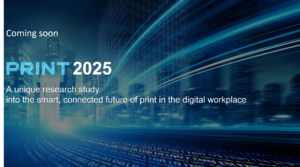
HP: Reinvention for the digital future
June 29, 2016
Channel, Artificial Intelligence, Security, Digital Transformation, Article, Trends
HP Inc. held its first analyst event for its newly combined Personal Systems and Printing organisation on 22-23 June in Boston, outlining its plans for reinvention, disruption and innovation.
Revitalising the printing business
HP Inc. faces challenging times in revitalising both its PC and printer business. Amidst declining sales and tighter margins, HP’s pillars of growth in office printing will be driven by expanding “Print-as-a-Service” offerings to increase recurring revenue and boost original supplies revenue; entrance into the A3 copier market and accelerating growth in its graphics business.
Key to the expansion of its product portfolio, from office printers to its digital presses, is HP’s PageWide technology. Unlike conventional ink-based devices, HP PageWide Technology uses a fixed print head across the entire page in a single pass. This results in thousands more print nozzles, and new ink formulations to deliver a whole new level of printing price/performance capabilities, while consuming less energy.
In March 2016, HP launched its new business HP PageWide Printers with a focus on professional colour, fast speeds, energy efficiency and a range of security and management features. HP now plans to expand the reach of PageWide Technology with a new A3 portfolio, targeted at capturing share in the copier market. Along with its mature LaserJet product range, HP is strongly positioned to offer a compelling portfolio of products, solutions and services for business customers. Its new PageWide portfolio will also increase the number of managed devices designed for contractual channel partners and managed print service engagements. This is all supported by an extensive range of JetAdvantage solutions which encompass mobile printing, security, workflow and management tools.
HP showed strong optimism for its Graphics Solutions Business, which includes labels, packaging, publishing, direct mail and signage. HP reported consistent growth for 11 consecutive quarters in this segment and HP’s strategy is to accelerate innovation to expand growth. Its broad product range includes HP Indigo digital presses and HP PageWide web presses which is supported by a wide ecosystem of software solutions and more than 250 partners worldwide.
The future of “blended reality” – 3D transformation
HP also shared its future vision of “Blended Reality”, that marks the collision of the 2D and 3D worlds. It is driven by the Internet of Things (IoT), Hyper-Mobility, 3 D transformation and immersive experiences.
3D printing may offer a much needed lifeline to stimulate growth in its stagnating printer business. But in a relatively nascent market, can HP carve out a leadership position with its new Multi Jet Fusion™ technology that overcomes many of the obstacles that are inhibiting mainstream adoption?
First announced in 2014, HP claims Multi Jet Fusion™ technology will revolutionise 3D printing. In May 2016, it unveiled its first production-ready system. Designed for model shops and 3D print service bureaus, HP claims the HP Jet Fusion 3D printer overcomes the limitations of traditional methods such as selective laser sintering (SLS) and fused deposition modelling (FDM). These are inherently slow, costly and based on closed platforms.
According to HP, Multi Jet Fusion™ technology is 10 times faster and half the cost of current 3D print systems, by printing functional parts at an individual voxel level (the 3D equivalent to a 2D pixel). A voxel is a tiny cube, millions of which make up a larger object. A single voxel is 50 microns in size and HP claims that its platform can print over 340 million voxels per second, rather than one point at a time, delivering faster and lower cost prototyping. According to HP, the printing process will enable more precise shapes, excellent strength, good elasticity, variable textures and a wide range of colours.
HP has released two new 3D printers, designed for rapid prototyping and production. The HP Jet Fusion 3D 3200 is an entry level model, around the same size as a washing machine at a cost of $120,000. At the higher-end the Jet Fusion 3D 4200 is targeted at customers that want to turn around same day small scale production runs.
HP emphasised its commitment to an open platform to foster innovation on a large scale. Its partner ecosystem includes Siemens, Jabil, Proto Labs, Autodesk, Shapeways, Materialise and brands such as Nike, BMW and Johnson & Johnson.
The next steps in store for its 3D printing platform include enhanced materials, full colour printing and the ability to embed sensors and other components directly into parts. Although most likely to be used for rapid prototyping, HP’s 3D print technology certainly offers the potential to transform the legacy models for manufacturing.
HP’s 3D printing strategy is complemented by the HP Sprout platform that features 3D scanning, gesture control, and touch screens to create designs that can be 3D printed through an in-house 3D printer or via a service bureau. Originally designed for creatives and the like, HP has announced a new version of its blended reality computer designed for “immersive learning”, Sprout Pro.
Outlook
HP is not alone in the challenge of stimulating demand for 2D printing. Driving growth in its core office printing business is ultimately based on capturing more pages which in turn boosts supplies revenue. Shifting sales to a contractual model will also boost recurring revenue opportunities, particularly in the SMB and midmarket which is largely an untapped opportunity for Print-as-a-Service. But it is HP’s “Blended Reality” vision that holds the most promise for the future and a revolution in its business. Its commitment to an open platform and collaboration is vital in driving innovation the Internet of Things.
For now, HP Inc. will need to turn around flagging sales in both its PC and printer business. But ultimately 3D printing and associated services could be the key to a reversal in its fortunes.
You have Successfully Subscribed!
Stay ahead with industry insights
Receive Quocirca’s latest articles and research updates




